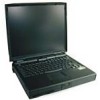Dell Inspiron 7000 Dell Inspiron 7000 Reference and Troubleshooting Guide - Page 58
drivers, expects, NOTE: Installed devices cannot share the same COM port address. The default, - boot from usb
 |
View all Dell Inspiron 7000 manuals
Add to My Manuals
Save this manual to your list of manuals |
Page 58 highlights
Some programs may leave portions of their setup information behind, even though you have exited from them. As a result, other programs cannot run. Rebooting the computer can confirm whether or not these programs are the cause of the problem. Other programs use specialized subroutines called drivers that can cause problems in the computer. For example, a variation in the way the data is sent to an external monitor may require a special screen driver program that expects a certain kind of video mode or monitor. In such cases, you may have to develop an alternative method of running that particular program-for example, the creation of a boot file made especially for that program. For help with this situation, call the support service offered by the manufacturer of the software you are using. Problems can arise if two devices attempt to use the same interrupt request (IRQ) line. To avoid this type of conflict, check the documentation for the default IRQ line setting for each installed device. Then consult Table 3-4 to configure the device for one of the available IRQ lines. NOTE: Installed devices cannot share the same COM port address. The default address of the computer's serial port is COM1. IRQ0 Generated by the system timer IRQ1 Generated by the keyboard controller to signal that the keyboard output buffer is full IRQ2 Cascade to second interrupt controller IRQ3 Reserved IRQ4 Used by the communications port (COM1) IRQ5 Used by the audio controller IRQ6 Generated by the diskette drive controller to indicate that the diskette drive requires the attention of the microprocessor IRQ7 Used by the parallel port IRQ8 Generated by the system RTC IRQ9 Free IRQ10 Generated by the USB IRQ11 Generated by the cardbus controller NOTE: For the full name of an abbreviation or acronym used in this table, see the Glossary in the System User's Guide. 3-12 Dell Inspiron 7000 Reference and Troubleshooting Guide















